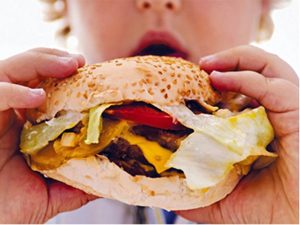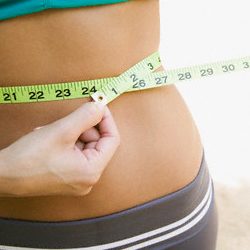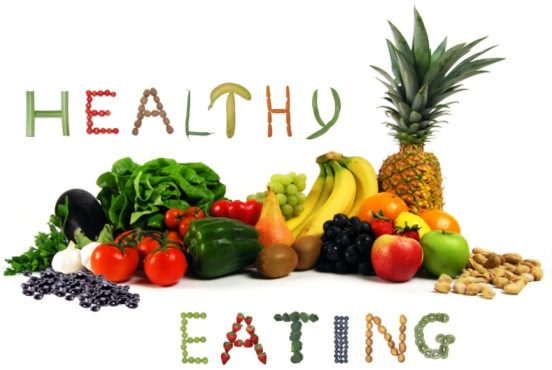Definitely something for everyone to learn here, from salts to packaging labels.
What is the most important thing to look for on food labels? My kids are both slightly overweight and so i am trying to become more aware of the processed food i give them. My husband and i could also do with losing a bit of our excess weight. How do i read food labels and what should i be looking out for? It’s all so confusing.
Many food products are promoted as healthy choices and are often advertised as ‘low fat’, ‘sugar free’ or ‘high in fibre’ to quote just a few. Unfortunately, just because a product makes one food claim, doesn’t mean it is the best or the healthiest choice or the most slimming choice. A product labeled as ‘low fat’ for example may still contain a huge amount of calories from sugar. Similarly a product that is claimed to be ‘cholesterol free’ may still be high in fat. Fortunately, it is mandatory for food manufacturers to put a nutrition information label on all their products, a development that has made it easier for shoppers to make informed choices about what they are really eating, and to choose the healthiest options for general well-being as well as weight loss.
Even with mandatory nutrition labels, there are still tricks used by food companies to make a product seem healthier than it really is. One such example is individual tubs of yogurt, which list nutritional information for a 100g serve of the product, when in fact a tub is 200g. It is unlikely that many consumers leave half the small container, so the majority of people are consuming twice as many calories, fat and sugar than the label states. For this reason it is important to know how to read a food label correctly. It is also important to know what to aim for when choosing a product. How much fat is too much fat? How much fibre is in ‘high fibre’ product? How many calories are in the serve size? Knowing the answers to these questions can make it easier to choose the healthier options when faced with the multitude of products available to us today. If you are wanting to lose weight the primary item to look at is the number of kilojoules/calories. Compare the different products and select the one that is lowest in calories.
When dieting it may be useful to measure out portions with a scale or cup, at least the first time, so that you know exactly what you are eating and what a serve size looks like in your bowl. This is particularly important for foods such as breakfast cereals, when serve sizes can be a lot smaller than what the average person is used to consuming.
When comparing the nutrition values of two foods, it is essential to make sure the serve sizes are the same so that you are comparing like with like. Some foods may also have nutrition content per 100g column which makes this job easier.
This lists the energy or calorie content of a serve of the product, and how much of this is derived from fat. In this way we can tell if a product is high or low in fat. It is important to remember that not all fats are created equal however, and a high fat product may in fact have a large amount of beneficial unsaturated fats. To determine the type of fat in a product we must check the nutrient values further down on the label. If an item has a low amount of calories from fat, but appears to have a high number of calories, check the sugar content.
When you want to lose weight you must exercise daily. You need to burn more calories than you are consuming. The less processed foods your family consumes the better, but keep portions small.
 Do I have an eating disorder? I binge eat with periods of starving myself due to the guilt of eating too much. Then I go back to binging because I’m so hungry.
Do I have an eating disorder? I binge eat with periods of starving myself due to the guilt of eating too much. Then I go back to binging because I’m so hungry.
I use laxatives but don’t purge. I have spoken to my GP about my eating but he hasn’t offered support, such as referring me to an eating disorders clinic.
An eating disorder is illustrated when you do not have a good relationship with food. You should be eating when you are hungry and stopping when you are comfortable. Binge eating illustrates an inability to control the amount of food you are consuming – this may be due to a number of reason, perhaps emotional, stress, fatigue, compulsion, anxiety. The starving yourself and the feeling of guilt are negative responses to the binge. Eating should not create these feelings. The use of laxatives is common amongst people with eating disorders as they do not want to gain weight or feel bloated when they binge. If you feel you do not have the power over the food you consume you should be seeing an eating disorder specialist to determine what is causing these uncontrolled binges. It is important that your eating habits are normalised for you to lead a more balanced life as the binges and starvation periods can affect you emotionally, your self image and self confidence. Triggers must be identified for you to overcome these problems. I suggest you see your General Practitioner or a Dietitian who can refer you to the appropriate specialist.
Are all foods with a low glycaemic index (GI) healthy choices? I have heard that chocolate has a low GI is that true?
Not all low GI foods are healthy, everyday foods. Many factors affect a food’s GI value, from its fat content and acidity to its type of sugars and starch, and its physical state (how it has been processed). Yes, it is true that chocolate has a low GI of around 45. This is because of its high fat content which slows down not only the rate at which the stomach releases sugars into the intestine, but also the speed at which the blood subsequently absorbs these sugars. However, chocolate is energy dense, so even a little piece gives you a large number of kilojoules. It is best to enjoy chocolate as an occasional treat, and to keep your portion sizes small. Also, choose a quality brand – preferably of dark chocolate, which has beneficial antioxidant properties.
To find out whether a packaged food is a healthy GI choice, scan store shelves for products that display the Low GI Symbol. The Low GI symbol Program requires these foods to meet very strict nutritional criteria, such as specific limits for kilojoules, carbohydrates, saturated fat, total fat, sodium and, if appropriate, fibre and calcium. These are exacting standards that make these foods healthy choices in their individual categories.
 I often hear people raving about gourmet salts, such as pink salt and rock salt. Are these better for you than regular salt?
I often hear people raving about gourmet salts, such as pink salt and rock salt. Are these better for you than regular salt?
Food companies do a good job of marketing gourmet salts as something special, but no matter how pretty the packet, salt is salt. Fancy varieties, which include rock salt, sea salt and pink salt, contain the same amount of sodium as basic table salt – and as we know, eating too much salt has a detrimental effect on our blood pressure and cardiovascular health. People often say that gourmet salts’ strong taste enables them to use only a sprinkling. In fact the opposite may be true. Gourmet salt’s crystals are usually bigger than table salt grains, so you can easily end up using even more.
The labels on gourmet salts often sport the word ‘natural’ in an attempt to convince us they are good for our health. This is totally misleading because, technically all salt is natural. Table salt is just a more refined version of sea salt or rock salt. And although pink salt owes its colour to trace minerals such as potassium, it does not have enough to provide any significant benefit to your health. In short, gourmet or not, all salts affect our health in the same negative way – and the average person is already shaking up to nine times the recommended amount into his or her diet.
I am very overweight, my liver is fatty, and I have insulin resistance. Should I consider eliminating processed foods from my diet? Or should I reduce carbohydrates and increase protein?
Having a fatty liver and insulin resistance are common consequences of carrying extra weight, leading a sedentary lifestyle and eating a diet that is high in fat or excess kilojoules. Excess liver fat can cause both reversible and irreversible damage, depending on the severity of the organ’s condition. Fortunately, exercising regularly and improving your diet – and losing weight as a result – can help ease both conditions. In fact, exercise is one of the most important things you can do to prevent the development of diabetes. In addition, eat at least 2serves of fruit and five serves of vegetables every day. Reduce you consumption of saturated fat and lower you daily kilojoule intake. High protein diets help you lose weight but they tend to be unsuccessful at helping you maintain longterm weight loss. The best way to lose weight and keep it off is to eat a sustainable, balanced diet. Studies show that if your liver is particularly fatty, a very low energy diet (VLED) meal replacement regimen can reduce liver fat within just 2 weeks. Following this program for eight weeks maximises this liver fat loss; however, if you return to your usual way of eating after being on the VLED, the fat will also return.
To minimise fat in the liver and keep insulin resistance in check, you need to make practical, permanent changes to your lifestyle. If you decide to do this, discuss your individual approach with an Accredited Practising Dietitian.
